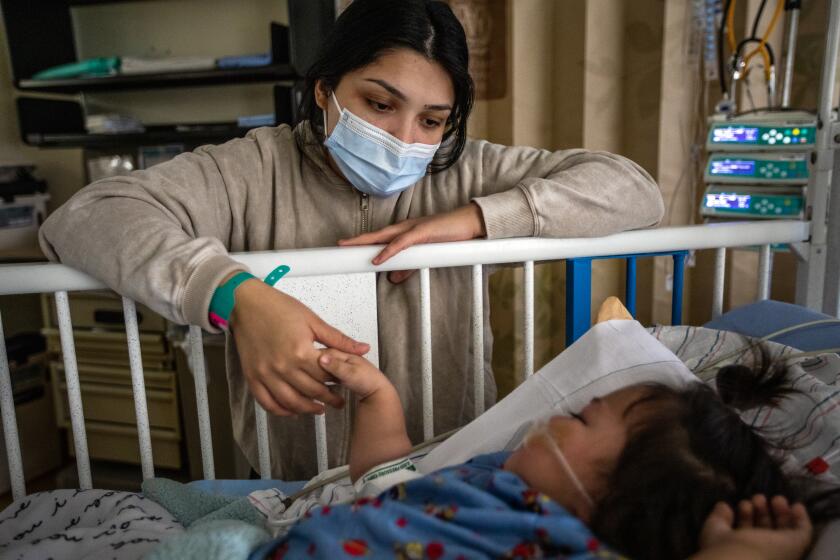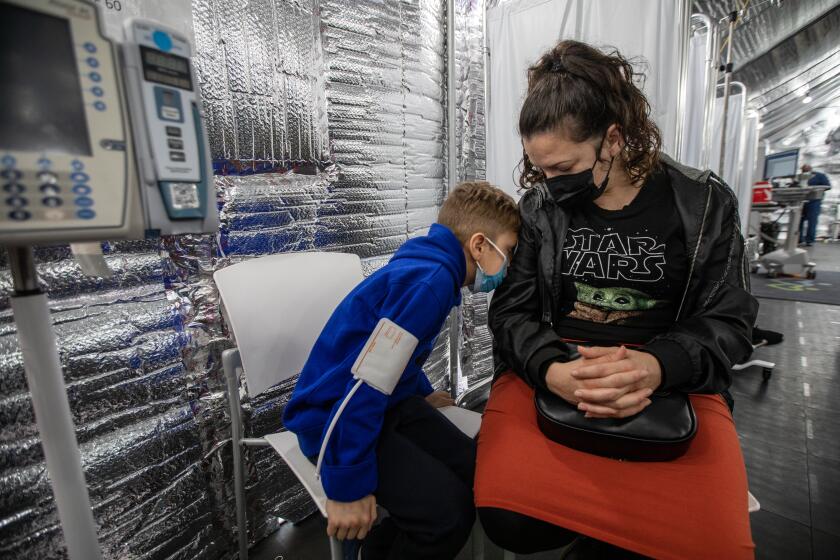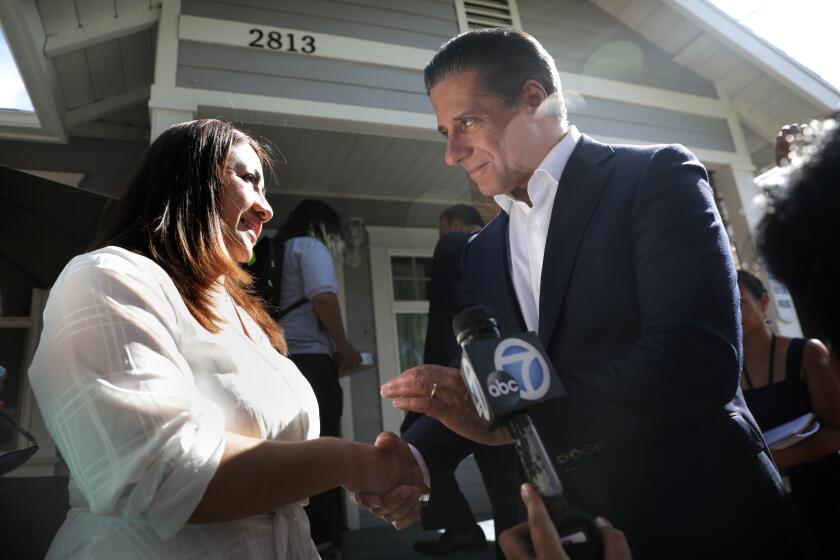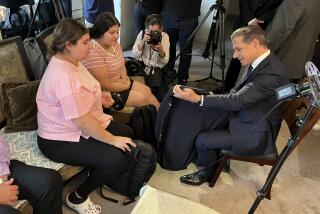Anxiety over ‘tripledemic’ has these LAUSD parents pleading for mask mandate
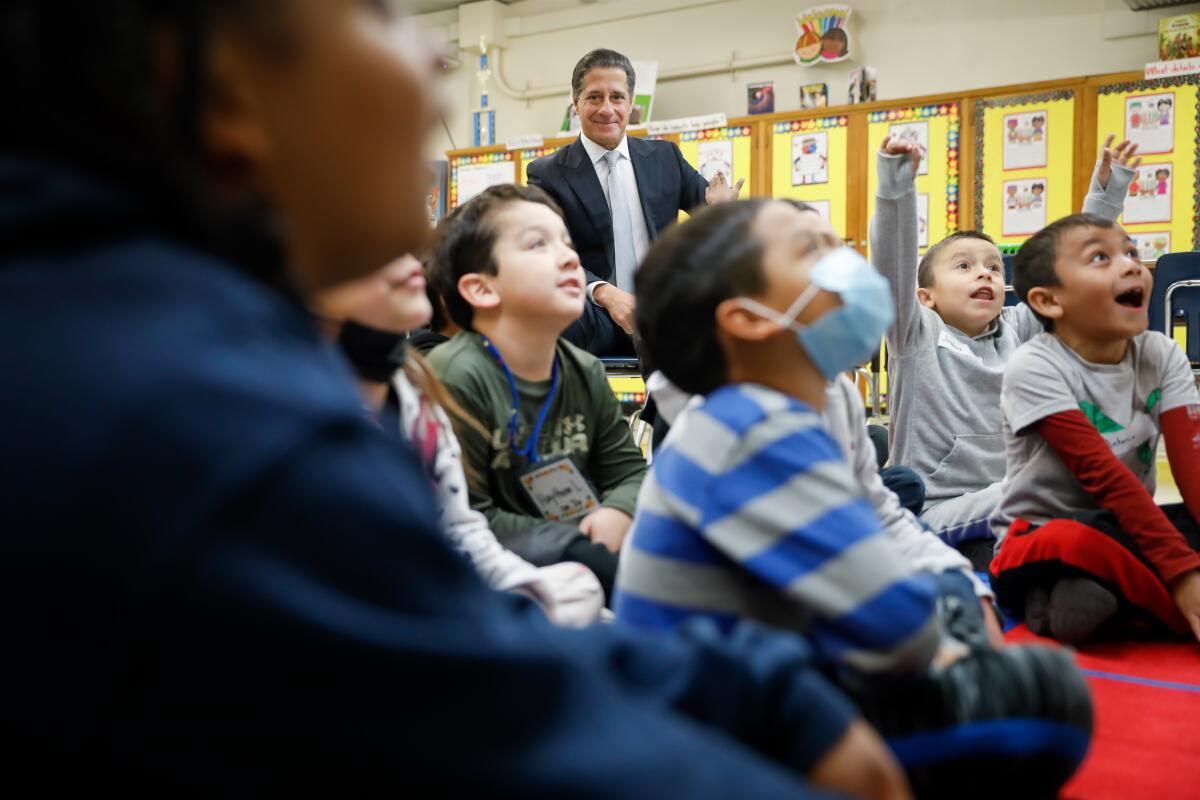
- Share via
At the first sign of a sniffle or stormy weather ahead Lourdes Lopez keeps her 10-year-old daughter, Alison, home from school.
Alison has Down syndrome and is more vulnerable to illness. A cold can be a major hardship, Lopez said, not only for her daughter but her entire family living in an overcrowded apartment in South Los Angeles.
Once again this winter, Lopez is feeling a dreadful sense of déjà vu. She doesn’t feel that her daughter is safe at school, especially with masking optional and no universal COVID-19 testing in Los Angeles schools. Alison has missed enough days that school officials have met with Lopez to discuss the absences.
“I know that if she misses class, she falls behind,” she said. But Lopez can’t justify risking her daughter’s health. “I told them that day that they have to help, too.”
Lopez’s concerns typify the voices of many Los Angeles parents who are navigating another troubling winter of health worries. Not only do they remain deeply concerned about ongoing COVID school outbreaks, but rampant flu cases and respiratory syncytial virus, or RSV, have compounded their fears. Among many low-income or multifamily households, anxiety has been heightened during the return from winter break, as a contagious virus that enters their home threatens not only the health of their child but their financial stability and well-being.
Lopez and a group of Latino parents recently met on Zoom to air concerns and discuss a plan of action. The parents prepared demands to send to the superintendent and school board members, including a plea for mandatory masking for at least January. The group also asked the district to reestablish on-campus weekly coronavirus testing.
“As parents who advocate for an equitable quality public education and safe school campuses, we’re concerned about a return to school without any clear preventative health protocols in place by L.A. Unified to protect our children from acquiring a respiratory virus infection,” wrote the group, comprising largely Spanish-speaking parents from East and South Los Angeles.
A week into the new semester, the group, Our Voice: Communities for Quality Education, has not yet received a direct response from the district. But in a Jan. 9 news conference, Supt. Alberto Carvalho took on what he referred to as “misinformation, disinformation, confusion and unwarranted fear.”
He said influenza and RSV are currently bigger threats to children than COVID, adding, “with that said, prevention is the best medicine. So mask up. We’re recommending the masking of students and employees.” He also blamed misinformation for depressing vaccination levels for COVID and other diseases: “This is the time to get yourself and your children vaccinated. It is the best measure of prevention.”
The collision of RSV, influenza, COVID-19 and other viruses has strained children’s hospitals across the country, including Loma Linda in the Inland Empire.
Carvalho’s approach has won praise from a different contingent of parents who oppose mandatory masks in schools.
But members of the Our Voice group say his insistence on voluntary measures marginalizes their concerns.
The district’s current approach to COVID is reflected in county health department guidance. Schools no longer report individual COVID-19 cases but still are supposed to report clusters of three or more potentially related cases, said Barbara Ferrer, L.A. County’s public health director. The reliability can be compromised because of inconsistent testing and reporting, and the reality that many children have no symptoms or mild symptoms.
Even so, there was a gradual rise in reported clusters over the fall and a sharp spike in December — consistent with past surges that followed family gatherings over Thanksgiving. In the first week of October, for example, there were 27 clusters in schools and youth programs countywide. The figure was 64 the week before Thanksgiving and 226 in the last full week before winter break.
While the precise number of cases and clusters is likely to be underreported, the spike itself is telling, Ferrer said.
L.A. Unified is still gathering data on COVID infections — and has a policy asking parents and employees to upload positive test results to a tracking system, but compliance is optional. County officials have the same tracking problem — testing is not widespread and COVID cases are not necessarily reported.
Carvalho’s reliance on optional masking puts Los Angeles Unified in line with most school systems. Earlier in the pandemic, the district enforced strict testing rules longer than most school systems, imposed an employee vaccine mandate and tried unsuccessfully to require students to get vaccines, attracting some vocal critics.
“The mask mandates and the testing were a complete waste of our tax dollars,” said parent Jenny Zepp, a Westside parent. “So much learning, mental/physical/emotional health was lost.”
“COVID should now be treated as you would any other virus,” district parent Carrie Kangro said. “I don’t think we should even be testing for it anymore. If you’re sick, stay home. If not, carry on. And get vaccinated.”
Her view was not far off from that of L.A. Unified medical director Dr. Smita Malhotra.
“Thanks to science, thanks to vaccinations, thanks to therapeutics,” Malhotra said at the news conference, “we are now in a place where COVID-19 ... is similar to ... RSV and flu. And so, as we have entered this new season of high respiratory illnesses, we’re treating this like we have treated all of the respiratory viruses.”
Malhotra, who also defended the district’s earlier approach as correct for that time, strongly urged masking, though without a mandate.
One local charter school group is going against the current grain. KIPP SoCal returned to mandatory masking early in December at its 24 local campuses. KIPP schools are in low-income minority communities hit especially hard by COVID.
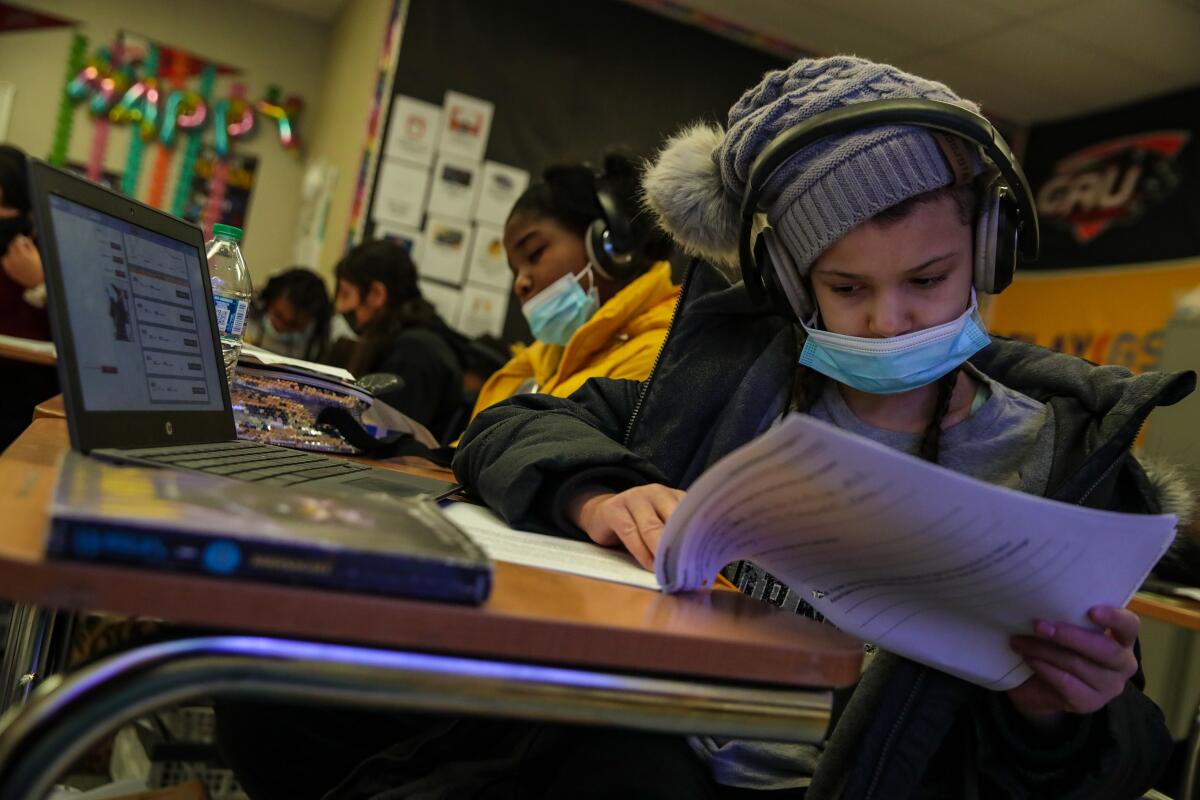
LAUSD parents who live in vulnerable communities say the district needs to do as KIPP did.
“The pandemic hasn’t passed,” Lopez said. “There are more viruses coming very strong.”
Lopez said she feels mandatory masking would be a simple way to protect the most vulnerable.
In her community, MLK Community Hospital is struggling against the tripledemic of flu, RSV and COVID-19.
MLK Community Hospital officials said its packed emergency department is the result of the paucity of medical care in South Los Angeles.
Lopez, 39, lives in a two-bedroom apartment her family shares with her brother-in-law. She, her husband and her three children live in one of the bedrooms. If her husband, who has diabetes, gets sick and can’t go to work, he doesn’t get paid, and bills don’t get paid, she said.
Lopez’s experience is common within low-income communities, reflecting the outsized effect of serious illness.
Since campuses reopened universally in the fall of 2021, voluntary mask wearing has generally been more widespread at schools where there is a higher enrollment of Latino and Black students from low-income families, according to parents and teachers — and also based on visits to campuses. When COVID transmission is higher, these groups continue to suffer worse health consequences, Ferrer said.
Maria Baños, 43, lives in a small one-bedroom apartment in South L.A. with her husband and four children.
“I live in a vulnerable community,” Baños said. “I’ve seen, around me, many cases and personally I’ve had COVID-19 three times. And my wish is that my children don’t go through that. Unfortunately, even if we take precautions ... cases happen daily. If COVID-19 is in the community, it’s in the schools.”
Baños said she’s concerned about how much class time her children are missing due to getting sick.
She sends her kids to school healthy, and they seem to come back with fevers, Baños said. The teachers send them home sick sometimes, and tell her not to worry; they will help them get back on track. But, she said, even as school officials press for good attendance, she doesn’t feel her children get much help.
“To me it’s another pandemic, because we have [the] Omicron [variant], the flu and RSV. I’m worried my children will have one of those illnesses and that they’ll have to stay home. Even if the school says they’ll help, the reality is if they fall behind, they fall behind.”
Absences remain a problem. Since November the L.A. Unified attendance rate has been about 89%, below the pre-pandemic rate of 95% or better. Chronic absenteeism remains high, with about 2 in 5 students missing 10% or more of classes.
Nearly half of L.A. students were chronically absent last year. Educators say they must bring children back to class.
“I don’t like to hide ugly truths,” Carvalho said at the news conference. “We have improved chronic absenteeism.... That’s still not enough.”
Baños said she especially fears getting sick because, as an immigrant, she doesn’t know what would become of her children if she can’t take care of them.
“If I report to the hospital that I’m sick, where would they take me? Who would take care of my children? That’s my fear,” she said.
Recently elected L.A. school board member Rocio Rivas, who represents East L.A. and parts of central L.A., echoed Carvalho in urging parents to use free at-home coronavirus tests provided by L.A. Unified.
Rivas, a district parent, added that she plans to assess whether stricter measures may be necessary for the next time students come back from a vacation period.
“We need to be more proactive in taking preventative measures. As a parent, I share the legitimate concerns of other parents.”
“We have to be as diplomatic and democratic as possible,” Rivas said. “Everyone’s concerns are legitimate whether you want to wear a mask or not. The concern is our social responsibility; we have to take care of each other.”
More to Read
Sign up for Essential California
The most important California stories and recommendations in your inbox every morning.
You may occasionally receive promotional content from the Los Angeles Times.
